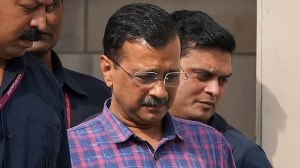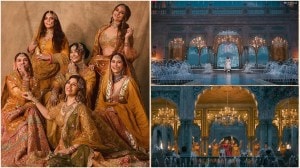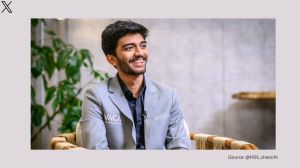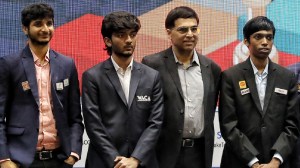- India
- International
Sound of movies
Pankaj Kedia, Country Manager Dolby India on how their new offering Dolby Atmos is separating the noise from the sound
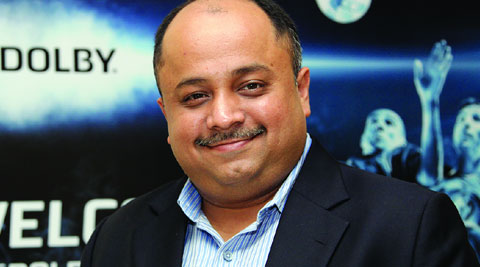 Pankaj Kedia
Pankaj Kedia
Resul Pookutty, the Oscar winning sound designer says that film going out of the cinema making chain has given film-makers and sound specialists a lot of freedom. “Technology (like Dolby Atmos) now offers the possibility of giving it a larger-than-life feel in films like Avengers.”
Pankaj Kedia, Dolby’s man in India, is tapping into that very sentiment for expanding the company’s sound empire in India. Despite the obvious odds — just a handful of state-of-the-art theaters that can accommodate Dolby Atmos — the company’s new offering, the mood, he says is upbeat. As per their estimate there are 40 screens installed/under installation, 75-80 screens expected by end of 2014 in eight cities —Delhi, Mumbai, Chennai, Hyderabad, Cochin, Coimbatore, Trivandrum and Lucknow. That over 25 Indian titles released, quite a few of them A-list projects — Kick, Singham Returns, Mary Kom, Madras Cafe and Bhaag Milkha Bhaag — have used Dolby services, augurs well.
In fact Madras Cafe even won the National Award and Screen Award for Best Sound Design and Best Location Sound Recordist!
But then, again Dolby’s connect with India, he points out, is a very old one. Ray Dolby, the founder of the company came to India for two years in 1963 as a United Nations advisor before returning to London and establishing the company in 1965, and he did a lot of research while he was in India. “It was during this time that he figured out a solution for noise reduction in magnetic fields (during recordings). He was based in Chandigarh and travelled all over the country and recorded a lot of classical music. It was during a sitar recording that he figured out how to solve this problem. He actually drove back to London in his car. He was writing the patent while driving to London and he formed the company (Dolby) so that’s the historic connect with India.”
Presently, the company is trying to further strengthen its roots in India. “From a business perspective we have been involved with the cinema side for 25 years. That was done through local partners but in 2009, we decided to have a direct presence in India and broadbase ourselves, and that was the time when the company was re-innovating, introducing a lot of new technology. We were in a space where digital technology was coming in. Our endeavour was to bring in the new generation of sound technology to India for cinema and then broadbase ourselves beyond cinema into television broadcast (multichannel surround sound) as well and digital media devices,” says Kedia.
In the process of setting up a presence across the country, Dolby’s strategy is about working on the ecosystem with a strong focus on content. “We work very closely with all content creators — directors, sound designers, studios — right from the beginning. For instance, we would rather provide inputs to scriptwriters to think of sound as a storytelling tool rather than adding it all at the last minute. Delivery is the second part. In the broadcast context it is like the DTH or the cable operator, so the idea is to work with operators who process this content and deliver it to the end consumer, and third is playback. In the case of cinema, it is the actual cinema environment in the hall. In broadcast, it is the set-top box, the home theater television or the playback devices so we work across this entire range,” explains Kedia.
As for the company’s revenue stream, he says, “We typically monetise on the playback, but we do a lot of enablement work in content and delivery platforms. For instance, India which is not a big destination for licensing and manufacturing, is not a big target market in terms of generating revenues from set top boxes or playback devices. So about 80-90 per cent of our work is focussed towards content in India because it’s a big content market.”
It is therefore a logical progression for the company to ensure a high level of involvement in order to deliver the goods. Kedia says, “With content like a movie, TV show or live sports like Pro-Kabaddi League on Star Sports, our team has been involved right from the time that the makers were conceptualising on how the show will be recorded, captured and mixed. A lot of people ask us why do we do all this work on content, because we don’t really get paid for it, but the philosophy of the company is that unless you solve the ecosystem, the benefits of technology are not going to be realised. Like, we put all this into a set-top box or television, but if the content is not going to be created correctly, you are not going to get the benefit.” And Atmos is no different. The good part is that film-makers are buying into the idea — Mary Kom and Bombay Velvet are recent examples. Visibly quite thrilled at the response they have been receiving, Kedia avers, “Atmos is a new sound format as different from the earlier 5.1 or 7.1 of surround sound which meant there were five or seven channels going to different parts of the theater. So from each side you got one sound. As a result, you were getting sound all around, but there was no sound separation. But that’s not how real life is . Atmos is basically recreating real life sound. What we have done is we have taken this limitation of channels— you can have as many channels as you want and basically with the current design you can install 64 speakers in the theater and also overhead in the ceiling (which was not there earlier). Using the venting in the system, we can position and place any sound anywhere which is how real life is. In a jungle you will hear a bird from one spot—it’s very localised, very precise. That’s what Atmos helps create. Technology for the sake of technology is no good. It has to help from the story perspective and so what it does, the result is that it’s a very immersive experience for the audience. Madras Cafe is a great example as it used the technology really well. They used it so precisely that if there is a jungle, you can hear the boat in the distance. You can hear the city sound somewhere else, so you a get good context of where you are and what is happening around rather than just darkness in a jungle. The image is able to tell you that but sound is able to do it much better.”
Quite evidently as per the Dolby version, hearing, is believing.
Photos
Best of Express

Apr 23: Latest News
- 01
- 02
- 03
- 04
- 05






















